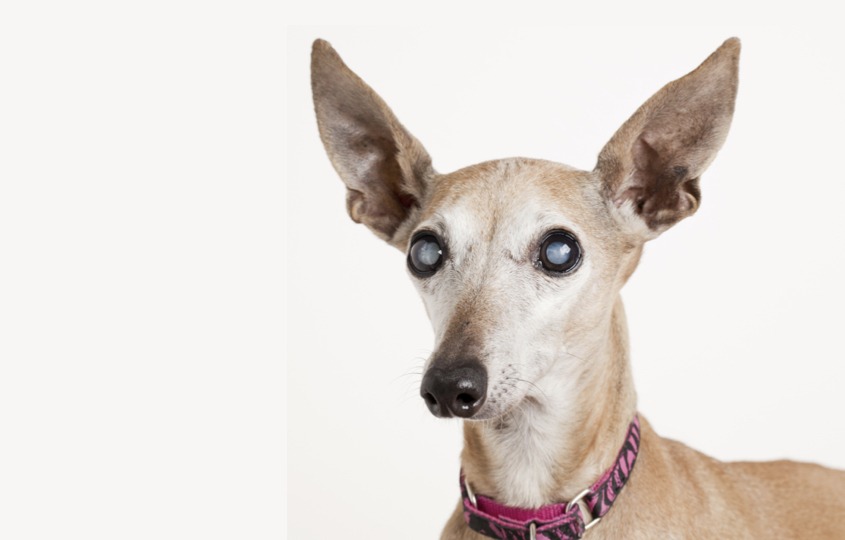Many pet parents confuse cataracts (an illness which could lead to blindness) with nuclear sclerosis (a condition which happens in older dogs and doesn’t necessarily affect vision). Watch our interview with Dr Derek Chow, a specialist in veterinary ophthalmology at Veterinary Specialty Hospital (VSH), to know the differences and the easiest way you can do at home to detect possible symptoms of cataracts. Or if you prefer text version, keep reading.
What is cataracts? How does nuclear sclerosis differ?
Dr Derek Chow: Cataracts occur when the cells or protein fibers are swollen, distorted or damaged. You will see whiteness in the pupils and light cannot go through the lens, so dogs lose vision. Dogs with cataracts can possibly see shadow or object, but they cannot tell what the object is. It means when you wave your hand, your dog may blink or dodge without knowing what that thing is. Or if the object is static, your dog may bump into it.
Nuclear sclerosis is an age-related condition. It normally occurs for dogs of 7 years old or above. The size of the lens doesn’t change in size, while lens fibers are produced throughout life and continue to be deposited. The central lens is compressed by new fibres, and it looks white. By appearance, the whiteness looks like cataracts, but, in fact, since the fibres are perfectly organized, light can still go through the lens. It means dogs can see. This condition, is actually the equivalent of “Presbyopia” in humans.
Any easy way to identify if my dog may have cataracts?
Dr Derek Chow: Yes, if you want a simple and quick way, firstly take a picture of your dog or point a torch at your dog’s eyes from a distance. Lets say if a dog has just nuclear sclerosis, since light can go through, tapetum (the retroflector of retina) will reflect visible light back through the retina. As humans, we don’t have tapetum. When we are taken pictures of ourselves, our eyes turn red. It’s “red reflex”. For some animals, their eyes usually turn blue, green, orange or yellow. So, if you take pictures of your dog, your dog’s eyes lighten up, it means the lens are probably fine. But if one of the eyes are not lighten up (doesn’t reflect light), then there’s a high chance your dog has either cataracts or some problems with cornea. This is the easiest way to check at home.
How do vets usually carry out eye examination and with what diagnostic tools?
Dr Derek Chow: When you go to an ophthalmologist, a range of diagnostic tools will be used for a complete eye examination. We will examine everything from eyelids, cornea, anterior chamber, iris, lens, optic nerve and etc. Slit lamp, for example, can help me see where exactly cataracts is on the lens. Lens sit in the middle, and the area is large. Sometimes, cataracts may not locate at the centre. It could just sit at the side, the front or at the back.
So we need to know where and how big the affected area is. If the affected area is just small at the size, a surgery may not be required. If cataracts is at the centre and vision is severely affected, obviously we would recommend surgery treatment.
Hellodog does not provide medical advice, diagnosis or treatment. See more details here.
